Ever wonder what kind of wildlife could survive the harsh climate of the Badlands?
-
Badlands National Park
Article 1: Bison, Buffalo, Tatanka: Bovids of the Badlands

The story of the Bison is central to the cultural and scientific heritage of people and their environment in North America. This article discusses these aspects in relationship to South Dakota and Badlands National Park. Read more
-
Article 2: Bison Conservation Initiative

The 2008 BCI has been a touchstone for DOI bureaus for 12 years. The commitments made there have now resulted in meaningful technical products and organizational improvements that continue to advance the conservation of American bison. The Bison Working Group, established as a mechanism for implementing the 2008 BCI, quickly became a productive model of interagency collaboration. Federal professionals working in support of bison conservation note that today we enjoy an ... Read more
-
Article 3: Population Viability Analysis
This study confirms that management of DOI bison herds in isolation promotes the loss of genetic diversity within all herds. More importantly, this study demonstrates that increased herd size and targeted removal strategies can reduce rates of diversity loss, and that adopting a Departmental metapopulation strategy through facilitated periodic movement of modest numbers of bison among DOI herds (i.e., restoring effective gene flow) can substantially reduce the... Read more
-
Badlands National Park
Article 4: Bighorn Sheep in the Badlands
Bighorn sheep are one of the most iconic Badlands mammals. Learn about their natural history, daily activities, and life in Badlands National Park in this article. Read more
-
Badlands National Park
Article 5: Black-footed Ferret: Rebounding in the Badlands

Black-footed Ferrets are one of the most endangered species in the North America, and Badlands National Park contains one of the world's only self-sustaining populations. Read this article to learn more about these fascinating critters. Read more
-
Badlands National Park
Article 6: Amphibians: Unlikely Inhabitants of the Badlands
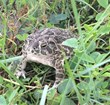
Although the Badlands seems like an unlikely home for amphibians, the park hosts eight species. Learn more about these critters and their lives in the Badlands in this article. Read more
-
Badlands National Park
Article 7: Landbird Monitoring in Badlands National Park
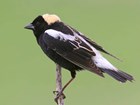
Landbird monitoring has been conducted at Badlands National Park since 2012. The park lies at an avian crossroads where both eastern and western species can be observed Read more
-
Badlands National Park
Article 8: Badlands Butterflies
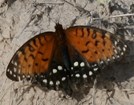
Hikers in Badlands National Park often notice butterflies floating through prairie grasses. Learn about the different butterfly species of the Badlands in this article. Read more
-
Badlands National Park
Article 9: Hunting Sky High: Birds of Prey in the Badlands

Birds of prey are birds that hunt and eat vertebrate animals as opposed to insects or berries. Learn more about these incredible animals in this article. Read more
-
Badlands National Park
Article 10: Badlands Birds

206 bird species have been documented in Badlands National Park. Read about the birds of the Badlands and access a species list for the park in this article. Read more
-
Badlands National Park
Article 11: Bat Acoustic Monitoring at Badlands National Park
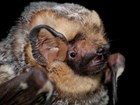
Badlands National Park contains rugged badlands and a large expanse of mixed-grass prairie. The unique physiographic environment of the park supports a bat community very different from other parks in the Northern Great Plains Network. We monitor bats here to learn about the current status of their populations and to look at long-term trends, particularly since the fungus that causes white-nose syndrome has arrived at the park. Read more
-
Badlands National Park
Article 12: Prairie Dogs: Pipsqueaks of the Prairie
Prairie Dogs' role in prairie ecosystems of the Great Plains Read more
-
Badlands National Park
Article 13: Pronghorn: Racers on the Great Plains
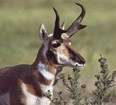
What Badlands animal can reach top speeds of 55 miles per hour and is most closely related to the giraffe? Pronghorn! Read more about these animals and the lives they lead here. Read more
-
Badlands National Park
Article 14: Reptiles of the Badlands
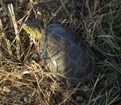
Badlands National Park is a home for many reptile species, including snakes, lizards, and turtles. Read about these critters and their lives in the park here. Read more
-
Badlands National Park
Article 15: Prairie Rattlesnakes in the Badlands
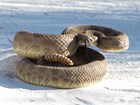
Learn about Prairie Rattlesnakes and the role they play in Badlands National Park. Read more



